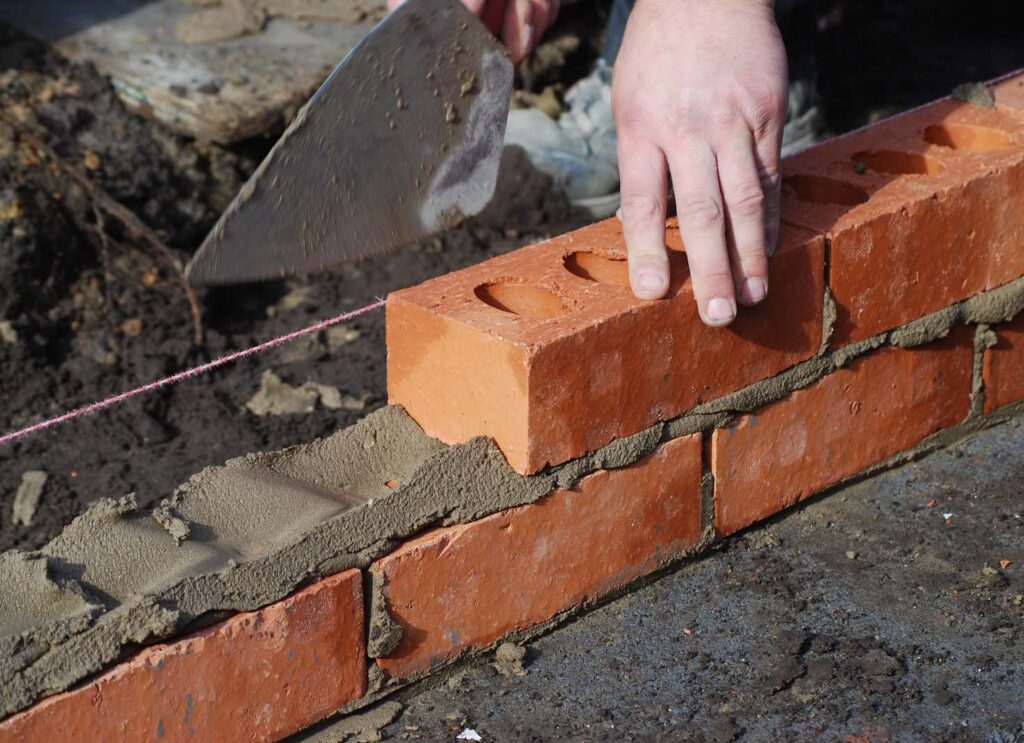Best Building Materials For Walls: Beginners Guide
Written by Aron Marriott-Smith • in Building Materials

Thinking of building a wall but not sure what materials you need? Different types of walls serve different purposes and, therefore, require distinct types of materials. The choice of material can affect everything from the wall’s strength and insulation to its aesthetic appeal and cost. Whether you’re embarking on a DIY project, planning a self-build, or just interested in the nuts and bolts of wall construction, this guide will help you make informed decisions about the best materials for your needs. Let’s dive in!
Table of Contents
What is the best type of building material for walls?
The best building material for walls depends on the requirements of the wall; for load-bearing walls, solid concrete blocks offer high structural capacity and fire resistance. For allowing natural light, glass is unrivalled, while clay bricks are prized for their durability, thermal properties, and fire resistance. Natural stone, despite being susceptible to thermal shock and staining, offers an elegant look with robust strength.
| Building Material | Description | Technical Properties | Suitable Wall Types |
|---|---|---|---|
| Solid Concrete Blocks | Manufactured from cement, sand, and aggregate | High structural capacity, fire-resistant, easy to use | Load-bearing walls |
| Natural Stone | Undressed pieces of stone | Susceptible to thermal shock, porous, may stain | Random rubble walls |
| Clay Brick | Made from clay, shaped, and fired in a kiln | Durable, good thermal insulation, fire-resistant | Interior, exterior, load-bearing, non-load-bearing |
| Glass | Manufactured from silica sand at high temperatures | Allows natural light, aesthetic appeal, poor insulator | Interior, non-load-bearing, partition |
| Wood | Harvested from trees, then processed and cut to size | Lightweight, eco-friendly, good insulator, requires treatment for decay | Interior, non-load-bearing, partition |
Different Types of Walls and Their Uses
When it comes to wall construction, it’s crucial to understand the different types of walls and their specific uses. The type of wall material you choose depends heavily on the function of the wall in question.
Load-Bearing Walls
Load-bearing walls are crucial structural elements in any building. They carry the weight from the roof or upper floors down to the foundation, acting as the building’s primary support system. Often made of sturdy materials like brick or concrete blocks, these walls need to be strong and durable.
Non-Load-Bearing or Partition Walls
Non-load-bearing or partition walls, on the other hand, are mainly used to divide space. They don’t carry any structural load, giving you more flexibility in choosing your wall material. Lightweight materials like plasterboard or timber are common choices here.
Exterior Walls
Exterior walls, as the name suggests, form the external envelope of a building. They protect against the weather and provide insulation. Materials for these walls need to be tough and resistant to external elements. Brick, stone, and cement are popular choices, offering both durability and excellent thermal properties.
Interior Walls
Interior walls divide the internal space and often have different requirements than exterior walls. They don’t need to weather the elements but should be aesthetically pleasing and easy to maintain. Here, materials like plaster, drywall, or even glass can be used, depending on the desired look and function.
Essential Components of Wall Construction
Building a wall involves more than just stacking bricks or blocks. Several key components contribute to a wall’s integrity, performance, and longevity. Let’s take a look:
Foundations
Foundations provide a stable base for your wall. They need to be strong enough to support the weight of the wall and resist soil movement. The type of foundation required depends on factors like the type of soil, wall material, and whether the wall is load-bearing or not.
Damp-Proof Course (DPC)
A damp-proof course, DPC is a layer of waterproof material in your wall that prevents rising damp. This keeps the moisture in the ground from reaching and damaging the wall material above.
Insulation
Insulation is crucial for maintaining a comfortable temperature inside a building. It can be incorporated into the wall construction or added to the cavity in a cavity wall. Materials should provide good thermal performance and be suitable for the specific wall type.
Reinforcement
For some types of walls, especially load-bearing walls, reinforcement may be necessary. This typically involves incorporating steel bars or mesh into the wall to increase its strength and resistance to forces like wind and earthquakes.
Best Types Of Wall Materials
Now that we’ve got the basics covered let’s dive into the best building materials for walls. We’ll discuss their features, pros, cons, and what type of wall they’re best suited for:
Clay Brick

Brick is a classic wall material known for its durability and excellent thermal properties. It’s versatile, used in both interior and exterior, load-bearing and non-load-bearing walls. But brick walls require skilled labour to construct, which can be costly.
Bricks are laid on a bed of cement mortar in layers known as courses. This type of masonry can be laid in a variety of patterns known as bonds. The most common type of bond is called running or stretcher bond, where courses of bricks are laid so they are evenly staggered. Bricks are laid in these bond patterns to help distribute the load of the wall and increase its strength. The different bonds and decorative patterns can be inset into brick walls for aesthetic appeal.
Natural Stone
Natural Stone walls are robust, long-lasting, and naturally beautiful. They’re suitable for both interior and exterior use and provide excellent thermal mass. On the downside, stone is heavy, making it more challenging to work with, and it can be more expensive than other materials.
Glass
Modern houses often feature glass walls for a sleek, contemporary look. Glass lets in lots of natural light and offers excellent aesthetic appeal. However, it’s not suitable for load-bearing walls and can pose privacy and energy efficiency challenges.
Wood/Timber
Wood is a lightweight, eco-friendly wall material option. It’s easy to work with, making it a favourite among DIY enthusiasts. However, it’s not as durable as some other materials and requires treatment to prevent decay. Wood is commonly used for internal partition walls, where timber is used to erect a frame to which sheet materials such as plasterboard can be attached.
Cinder Blocks/Concrete Blocks
Concrete blocks are strong and durable. They’re often used for load-bearing walls and exterior walls. However, they can be heavy to work with and require skilled labour. There are lightweight alternatives to heavy concrete blocks known as breeze blocks. Breeze blocks are made by aerating the concrete used to make them, hence why they are also known as aerated blocks.
Like clay bricks, blocks are laid on a bead of cement or concrete mortar in courses. Cinder blocks contain cavities in which reinforcement materials such as steel rods known as rebar can be placed before they are filled with concrete. This technique creates a very strong reinforced concrete structure.

